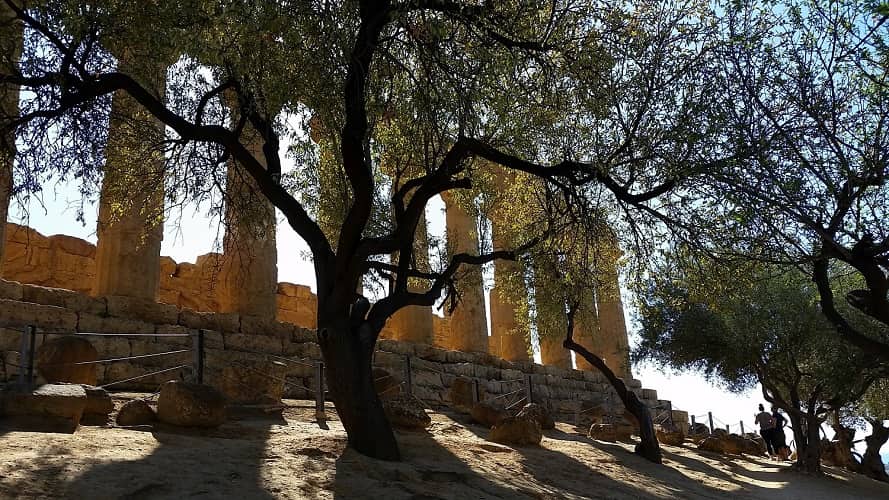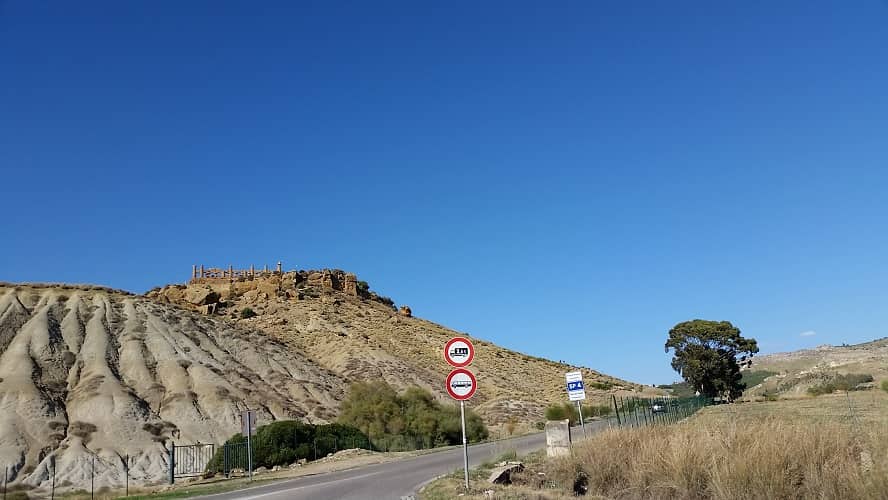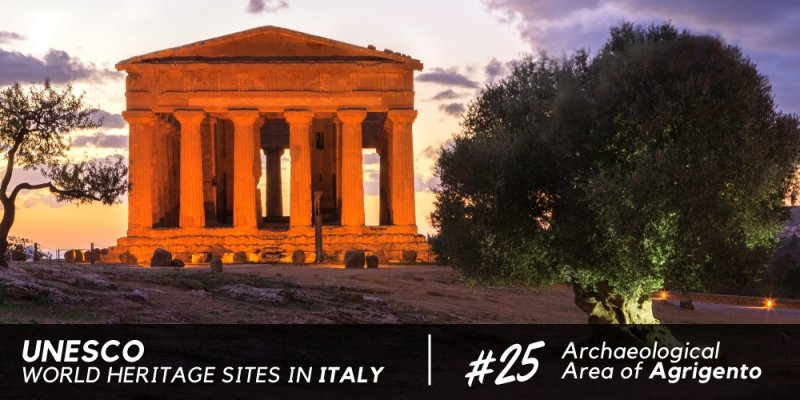ORIGIN AND EVOLUTION
The ancient city of Akragas was immersed in an agricultural landscape dominated by olive and almond trees. It was one of the most important Greek colonies in Sicily, founded in 581 B.C. by settlers from Gela, who came from the islands of Crete and Rhodes.
The city reached its maximum splendour in the 5th century BC, when the most important temples were built, distributed along the city walls. Akragas clashed with the Carthaginians and defeated them at the Battle of Himera in 480 BC. After several decades Carthage retaliated by destroying the city. Two centuries later, the city was conquered by the Romans, who renamed it Agrigentum and gave it a new era of splendour.
Agrigento is fascinating for its signs of first Greek colonisation, then Roman and Norman conquest, and then Spanish conquest. It bears all the charm of these different civilisations that established themselves into a multifaceted territory.
Since the Second World War, the city developed in a disorganized way, changing the layout between the medieval urban centre, perched on the hill, and the imposing remains of the ancient city known as the 'Valley of the Temples'. Despite these transformations, the historic centre keeps its importance in terms of urban planning and architecture, alongside the city's impressive archaeological heritage, which makes it unique in Sicily.

FAME AND LITERATURE
This place has been famous since ancient times thanks to the works of writers of the classical age such as Pindar, Diodorus Siculus, Polybius, then with artists and travellers of the 19th century such as Denon, Houel, Brydone and Goethe who wrote memorable pages of the Gran Tour.
Agrigento, or Girgenti as it was called until 1927, has also inspired writers and various poets: Tomasi di Lampedusa, Pirandello, Sciascia and Camilleri. They grew up in the Agrigento area and their works were born here. What inspired them? The Valley of the Temples, the Cathedral of San Gerlando and then churches, baroque facades, alleys and small squares. And let's not forget what lies close to it: the Scala dei Turchi, Sciacca and Eraclea Minoa, the Torre Salsa nature reserve.
THE ARCHAEOLOGICAL PARK

Established in 2000, the 'Archaeological and Landscape Park of the Valley of the Temples of Agrigento', which covers about 1,300 hectares, includes the archaeological areas already declared UNESCO World Heritage Sites in 1997. It is one of the largest archaeological sites in the Mediterranean.
The term 'Valley of the Temples' refers to the area surrounding the valley and the hill, including the necropolis and sanctuaries outside the city walls.
Crossed by roads connecting the city to the sea, the Park of the Temples is divided into several zones. Once entered the Valley of the Temples in Agrigento, you will feel like stepping back in time, as if time had stood still.
The Valley of the Temples is immersed in an agricultural landscape of rare beauty consisting mainly of centuries-old olive and almond trees. Covering some 450 hectares, it stands about 3 km from the sea on the top of two hills.
The Valley of the Temples is important for its well-preserved temples built in honour of Greek gods.
The Valley of the Temples consists of the remains of eleven temples, three sanctuaries, necropolis; hydraulic works; fortifications; part of a Hellenistic quarter and important meeting places.
Most of the temples in the valley were damaged by time and looted to reuse the materials.
The best preserved is the Temple of Concordia, built in the 5th century BC. The Temple of Concordia is safe because it was converted into a Christian church in the 6th century AD.
The Temple of Juno, also of the 5th century BC, was built to celebrate weddings. A centuries-old olive tree stands in its immediate vicinity.
The Temple of Heracles, built at the end of the 6th century BC, is the oldest one. Only nine of the original 38 columns remain, reconstructed by putting together piece by piece found in the area.
While walking in this place, you can truly admire the magnificence of the ancient Greek civilisation, in a breathtaking natural setting that especially just before the evening twilight, when the bright light filters through the columns of the temples, creates unique atmospheres and takes on mystical, dreamy connotations.
It is a place to walk slowly, listening to the silence and enjoying the view of the immense spaces.
Don't miss a visit to the 'P.Griffo' Regional Archaeological Museum in Contrada San Nicola, which exhibits 5688 finds dating from prehistoric times to the end of the Greco-Roman period.
LANDSCAPE AND VIEWS

The landscape of Agrigento is characterised in winter by the green and numerous almond trees in bloom that herald the spring, and in the hot season by the intense yellow of the sunburnt earth.
It is very picturesque to walk along the roads that border the valley. From the adjacent road you can see the temples rising from the walls, and you think "wow, like the ancients I walk among these roads and observe the history. I am into the history”.
About the highest side, which you walk along coming from the west. You can admire the valley from above, its majesty and its historical elegance. You can see the valley gradually merging with the sea and dominating the whole area.
MYTHS AND LEGENDS

Various researchers claim the existence of giants in Agrigento and the rest of Sicily, designating them as the first inhabitants of these lands. It is said that the giants arrived immediately after the universal deluge, and built majestic monumental buildings with their strength. In the archives of Agrigento there are several documents that mention findings of huge skeletons in several places in the territory during excavations for the construction of various buildings.
About the author
Written on 06/07/2021



Liliana Moccia
Agrigento and its Archaeological Park: one of the greatest examples of extraordinary monumental and natural heritage. It tells us a story of more than 2000 years.